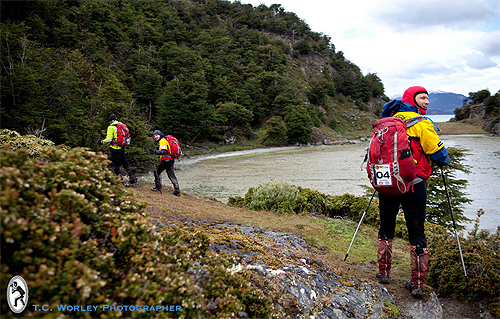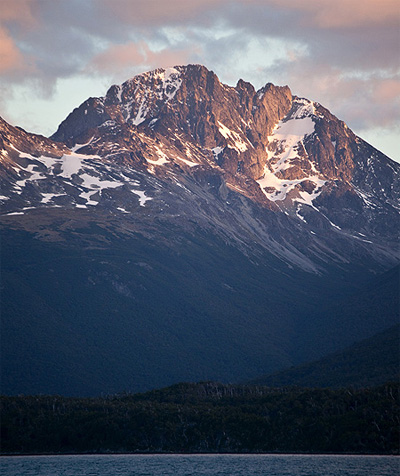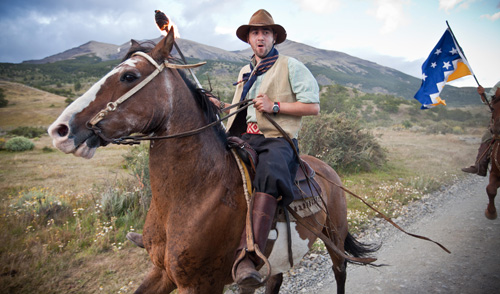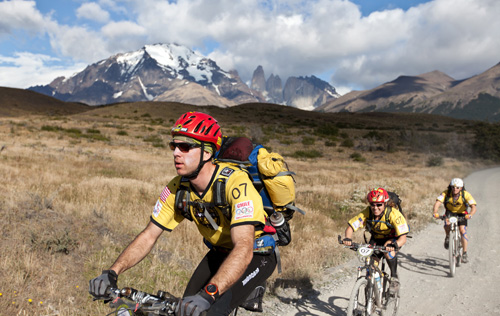Isla Navarino— In 2010, the Patagonian Race ended on this large and remote island near Cape Horn, the tip of the continent. We trekked for a day through its wild outback, encountering snow on high peaks and woods so thick at points we had to “swim” through the brush. Barren and mostly trail-less, the wilderness here is real. From Puerto Williams, the island’s only significant town, horseback tours, treks, and fishing guides can be arranged. There are a few restaurants and hostels in the town, and the place has the feel of a high-latitude outpost that’s only recently warmed to tourists. We lounged near the water in Puerto Williams, sitting on rocks and looking out, the black waters of the Beagle Channel fading in the distance toward a literal end of the Earth.
—Stephen Regenold is founder and editor of www.gearjunkie.com. He wrote about the Wenger Patagonian Expedition Race in a story, “The Last Wild Race,” earlier this year.

Click for FULL–SCREEN SLIDESHOW of Wenger Patagonian Race
SIDEBAR: IF YOU GO
“So far south it’s like you’re north again.” That’s one way to start a conversation and explain the strange hemispheric proposition that is Patagonia, an Ontario-size region that straddles vast wild lands of two nations, Chile and Argentina, before fading to a tip where South America disappears into the sea. Ice fields, mountains, endless forests and swamps, beaches, fjords, dry plains, and weird, tundra-like terrain in the region’s most southerly reaches make Patagonia among the world’s more diverse places.

Click for FULL–SCREEN SLIDESHOW of Wenger Patagonian Race
Travelers can approach Patagonia via Chile or Argentina, and there are myriad ways to see the immense region. For the past two winters, I have jumped in at Punta Arenas, a main town in Chilean Patagonian, to strike out toward natural destinations within a day’s drive of the town.
The “GoChile” portal is a good place to start looking at trip options and basic travel information. Nomadas Outdoor Services, the organization that runs the Patagonian Expedition Race, drills in on tours near the tip of continent, including its “End of the World” itinerary, a nine-day trip through the area that includes trekking and kayaking. Other “off the grid” activities in the area, including Pali-Aike National Park, Isla Navarino, and tours in the Strait of Magellan or Tierra del Fuego, can be arranged through outfitters in Punta Arenas. Book ahead or sign up once you arrive in the town.

Click for FULL–SCREEN SLIDESHOW of Wenger Patagonian Race
Torres del Paine National Park is a must-do for most visitors. Look into treks, kayak excursions, or climbing adventures at www.parquetorresdelpaine.cl. There is camping in the park, including primitive free sites, as well as lodges and luxury accommodations like the Hotel Las Torres Patagonia in or near the mountainous national park.
For more about the Wenger Patagonian Expedition Race, see the race’s main site, www.patagonianexpeditionrace.com or GearJunkie’s dedicated channel on the event at www.gearjunkie.com/patagonian-race for details on the author’s experience in the week-long competition through the wilds of Patagonia.

Click for FULL–SCREEN SLIDESHOW of Wenger Patagonian Race






